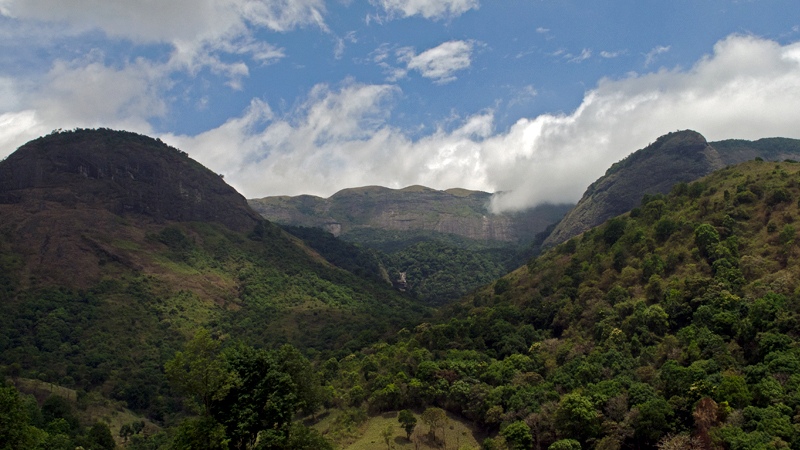
What made the dinosaurs go extinct? This scientific question has been fraught with controversy since the 1800s. For a while, starting in the 1980s, it seemed like everybody had settled on one cause: an asteroid impact from outer space. That’s what the textbooks say nowadays and that’s “what everyone knows.” But researchers, most of whom have been ignored and even shouted down, have kept on collecting evidence that favors an alternative. The case for their favored cause—volcanism—is bolstered by a paper in last week’s issue of the journal Science.
Dinosaur fossils appear in the rocks throughout the long Cretaceous Period, but disappear at its end approximately 66 million years ago (except for the birds, which live on today). It wasn’t just dinosaurs either: other land animals suffered too, and about half of all plant species disappeared. In the oceans, the large sea lizards known as mosasaurs vanished, along with the long-necked plesiosaurs and coiled shellfish known as ammonoids. Just as with land plants, the species of floating algae in the sea, the base of the ocean’s food web, were devastated.
Arguments have long raged over what caused this mass extinction, typically called the “K-T event” because it marks the boundary between the Cretaceous Period (marked “K” on geologic maps) and the Tertiary Period that followed. Changes in sea level, climate, and ocean chemistry were the preferred candidates for many decades, and studies have shown that each of these can be nasty enough to cause large waves of extinction. Other, more novel suggestions included waves of disease, bursts of supernova radiation and evolutionary chaos.
Around 1980, two new “bombshell” candidates arose: a gigantic episode of volcanic activity and a gigantic cosmic impact. The impact theory, invented at UC Berkeley, is so well known you can chat about it at parties. It’s plausible science and a great story besides. The main problem is that the K-T mass extinction appears to have started before the impact and continued after it.
The volcanic theory is just as plausible, especially after 30 years of research. Giant eruption episodes are blamed for causing several other mass extinctions. And lava flows built a stupendous pile of basalt the size of France, called the Deccan Traps, in the heart of India around the time of the K-T event. Large amounts of lava emit sulfur gases and carbon dioxide. Either of these gases could disturb global climate and the chemistry of the ocean. If enough lava were erupted all at once, the effects of both gases would look like an instantaneous blow in the geologic record. The main problem with the Deccan Traps is that its exact age and chronology are poorly known.